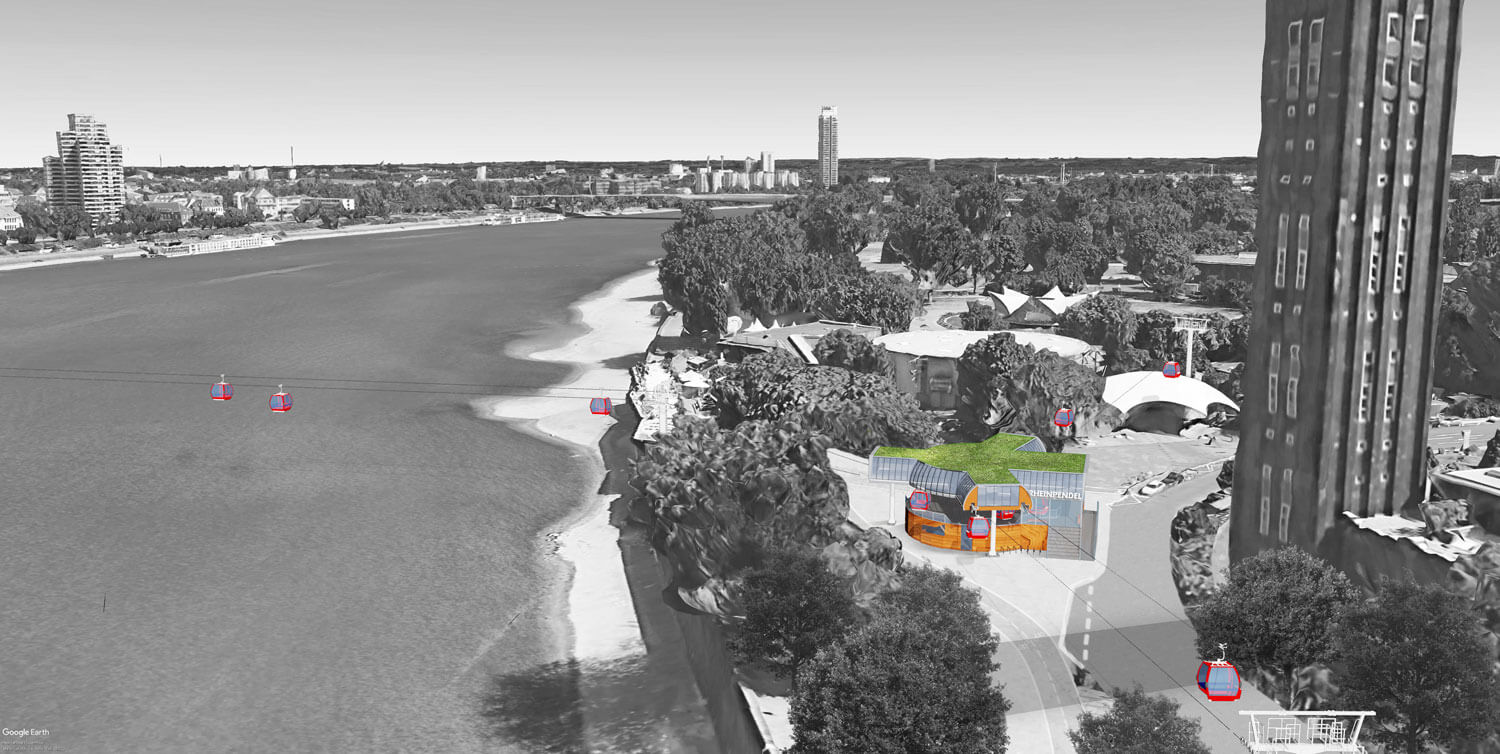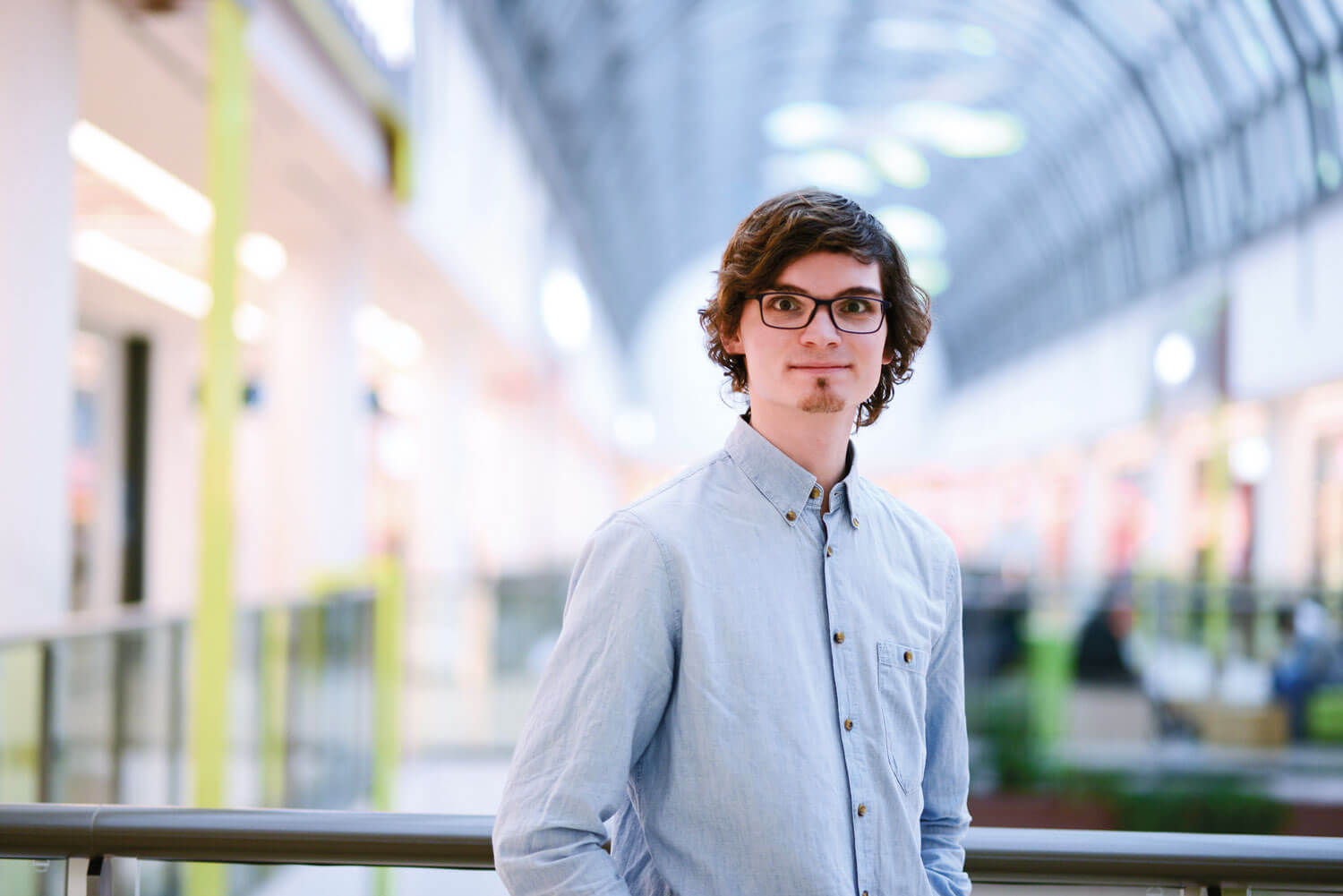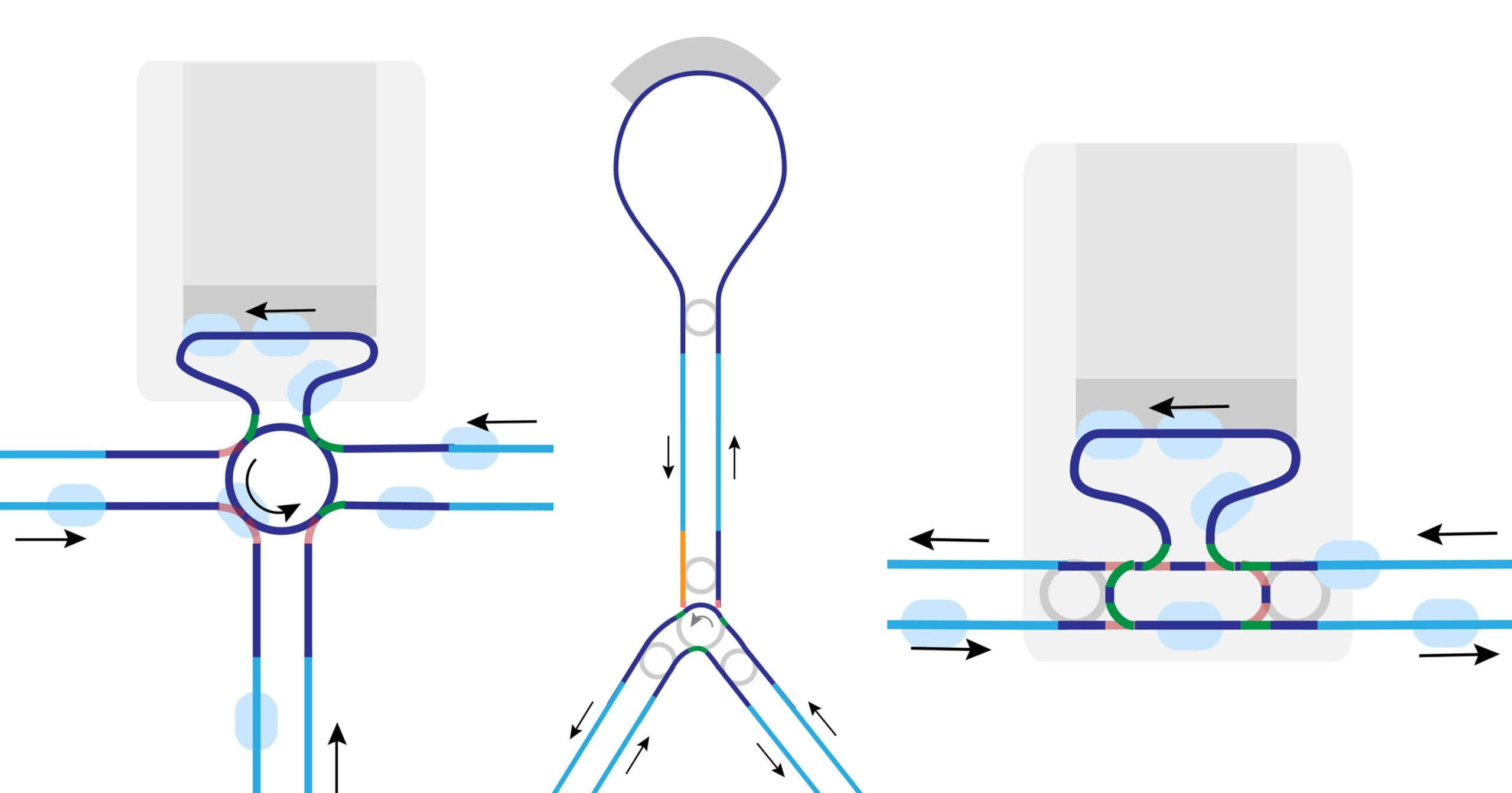
Cities, SI Urban 1/2020
INTEGRADET CABLE CAR SYSTEM


Intersections
The intersections are the centrepiece of the innovative concept. With fast junctions, these allow a network of individually routed gondolas. Before vehicles start, a pre-arranged route plan and associated cable allocation ensure direct transfer when they arrive at junctions and that minimum distances are maintained.
Stations
Alighting should be as easy as possible for passengers. Using an app or machine, passengers select their destination, pay the fare and wait for the boarding call or announcement. They then scan their ticket/app at the entrance before boarding their gondolaand–intheidealcase– reaching their destination directly with no stops.
To achieve this, the stations are equipped with destination selection and ticket machines, boarding and waiting time displays as well as express check-in (by means of ticket scanning). Two separate entrances (with exit) and an additional exit prevent collisions between passengers.
Boarding numbers, waiting times and queues at the entrance are needed only in the case of higher passenger numbers than the specified gondola capacities, to guarantee even distribution. “Only at peak times are passengers for the same direction but different destinations transported together in one gondola,” Weber says.
Using fast junctions, stations can be implemented with a transit area. As urban areas often offer little space for additional buildings, terminal stations and mid-stations with only one boarding and alighting area seem particularly attractive.
Through integration, stations can be designed flexibly, so that appropriate stations can be constructed depending on local conditions. They can be planned on one or more levels and conceived from the outset to be extendable for subsequent network expansion.

IT control system
Theallocationofpassengerstovehicles, the routes of the vehicles and the reservationofjunctionsarecontrolled by an IT system – which already works in simulations – with algorithms and a database. It receives information about vehicle locations as well as passenger details and after calculating the most efficient results, it transmits them to the cable car system, waiting passengers and staff.
Until completion of the IT infrastructure and in the event oftechnicalproblems,thecablecar system can also work in linear mode with all stops and transfer points.
Alternative routes
In places with a smaller route network or in a pilot phase, advantages of integrated systems can also be implemented without an IT system, with no electronic destination selection and gondola allocation before departure, such as with a cable car system in which e.g. every second gondola branches off or where the system bypasses mid-stations (request stop button).
As well as people, goods can also be transported from and to stations cost-effectively and quickly in a way that saves resources. Empty runsarethereforefilled,theexisting system is used optimally and road traffic is eased.







